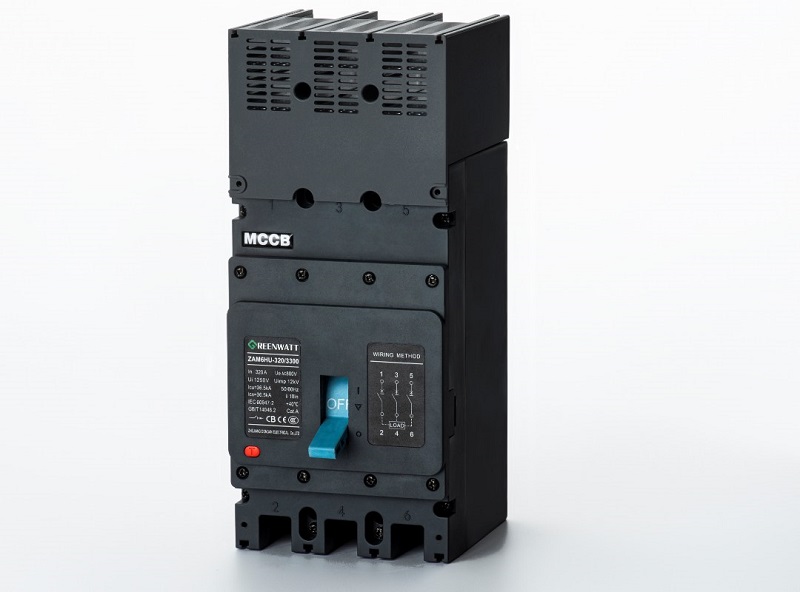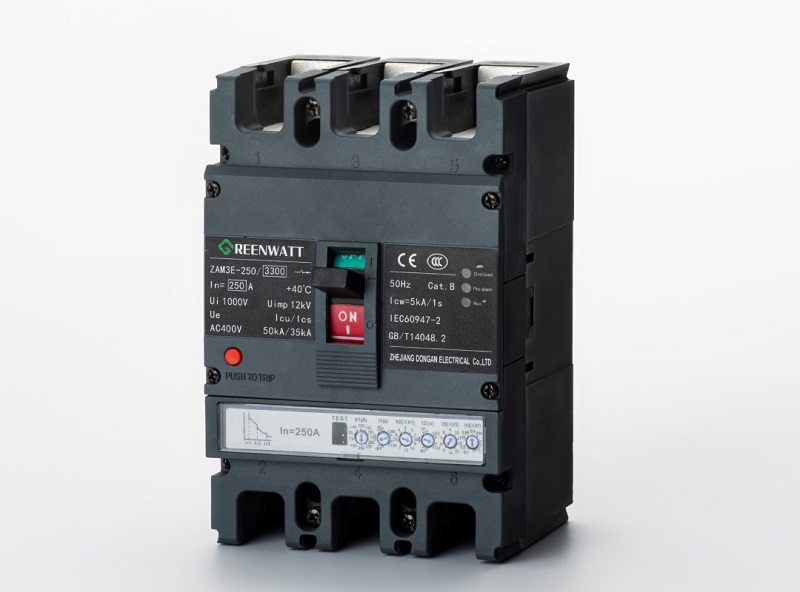AC and Electronic MCCBs: The Invisible Protectors of the New Power System
2025-07-30
Molded Case Circuit Breakers (MCCBs) are the unsung guardians of today’s complex electrical grid, shielding our power systems from the fatal blow of a catastrophic failure. These advanced devices are the first line of protection for overloads, short circuits, and other electrical faults that can cause devastating fire, damage to equipment, and costly downtime. In a world that is becoming ever more electrically driven, MCCBs are no longer just protective devices; they’re our electrified guardians of the future.
The Foundation: AC Circuit Protection
For decades, the classic AC 400V MCCB has been the bread and butter of electrical protection, based on a technology of thermal-magnetic trip units using bimetallic strips to protect against overloads and magnetic coils against short circuits. They are found in commercial buildings, plants, factories, and even in some residential applications such as houses with outbuildings and between machines in the same environment, protecting HVAC and elevator circuits, lighting, and heavy machinery. User-adjustable trip settings enable the breakers to be fixed to specific loads, such as those producing high motor starting currents.
The Push for Higher Voltage: AC 800V and Beyond
But, the change in the world of electrical systems has necessitated a need for higher voltage capabilities. AC 800V and high voltage AC solutions are in high demand, especially in renewable energy and larger-scale industrial applications. These high voltage systems provide several benefits — first, lower currents can be used for a given power transfer, which leads to lower cable losses (I²R) and significant capital cost savings due to smaller size cables and fewer distribution boxes.
Performing at higher voltages, however, has specific unique challenges, most significantly with arc suppression. “Zero-arc” technology is being developed partly in response to the difficulty of arc suppression at such high voltages. Current Model AC 800V MCCBs offer excellent performance specifications with 50 kA breaking capacity at AC 800V, a wide temperature range of -40°C to +70°C, and a rugged design that reduces maintenance. These features make them the perfect choice for solar inverter outputs, AC combiner boxes, and other renewable energy applications where dependable power is necessary.

The Intelligence Revolution: Electronic and Smart MCCBs
The transition from thermal-magnetic to electronic trip units is revolutionary in circuit protection. Digital sensors and microprocessors replace analog-based components. This computerized system can measure several electrical parameters, such as current, voltage, power factor, energy consumption, and harmonic components at a moment’s notice. This advancement combines the best performance of the previous generation with even more reliable protection and the ability to enable fine tuning and quicker settings adjustment while reducing nuisance tripping and increasing accessibility for selective coordination.
Connected and Proactive: Smart MCCBs and System Management
Smart MCCBs go further in this intelligence and add advanced functionality that turns reactive protection into proactive system management. Accurate metering capabilities allow real-time monitoring of electrical parameters, and self-diagnostics help prevent future issues by detecting possible hotspots and system problems before they become problems. Operators can remotely monitor the unit’s status, receive alerts, or even perform trip and reset functions from off-site locations.
The integration features of today’s smart MCCBs are awe-inspiring. With the implementation of ‘no fuss’ communication protocols like Modbus, Bluetooth, IEC 61850, etc., they can be easily integrated into Building & Energy Management systems. This connectedness turns MCCBs from isolated protective devices into intelligent data nodes in a larger electrical constellation, allowing them to perform analytics or the connection of renewable energy, load sharing, and optimal testing.

Deriving lessons from DC systems: high-voltage protection for LV networks
There is an excellent deal for the larger world of MCCBs to learn from the specific issues that DC circuit protection raises. Unlike in the case of AC, where there are current zero crossings in a natural manner, in DC systems, it is much harder to interrupt arcs. This fundamental difference in design philosophy has led to a series of innovative design solutions, such as those using magnetic blow-out coils to lengthen and cool arcs, elaborate arc chambers with occult paths to entrap and separate arcs, and adapted contact materials resistant to prolonged arcing conditions.
Forced current zeroing principles of DC breakers are applied in more sophisticated DC protection systems, such as hybrid and all solid state solutions, which are used to trigger a zero crossing artificially. Such advancements are vital in renewable energy systems where 1000V and 1500V are increasingly becoming the norm in solar PV and BESS. The move to higher DC voltages reflects the trend in AC, which provides lower cable losses and a lower capital investment, but with increasing arc extinction problems.
Excellence in Maintenance: Sustainability and Operability
A proper maintenance of the MCCB includes the knowledge of common failures and proper troubleshooting methods. The most common causes of MCCB failures are: overcurrent conditions, incorrect sizing or settings, mechanical deterioration, external influences such as dust and moisture, bad installation practices, and arcing damage. The systematic troubleshooting includes visual inspection for damage, discoloration, or moisture exposure, then continues with detecting trip causes and determining if the circuit breaker’s functionality can be restored using manual test and measuring steps, multimeters, thermal imaging cameras, or other equipment, such as the Omicron Breaker Testing Kit.
Regular preventative maintenance is key to performance and longevity. The equipment should be regularly checked at intervals proportional to the conditions and the vessel’s age. Soft brushes and compressed air are your best bet for cleaning, water, and chemical solvents you want to avoid! Yearly cycling between OFF, ON, TRIP, RESET, and ON maintains mechanical functionality, and scheduled retightening of connections using reference torque tools keeps the connections from heating and suffering failure.
It is reactive towards proactive and predictive, given the high price of downtime and the growing complexity of systems. This transformation prolongs the life of equipment, reduces operating costs, and meets safety requirements whilst improving performance.
The Horizon Ahead: Trends and Developments in the Marketplace
The MCCB industry is growing strongly, with CAGRs of 7.5% to 9.5% forecast up to 2034. This will be made possible by the proliferation of renewable energy, growing data center construction, development of electric vehicle infrastructure, industrialization in developing nations, and the emphasis on safety and efficiency. New opportunities are being developed in the smart grid and IoT for intelligent circuit protection products.
The technical development has extended the MCBF to a level that traditional MCCB designs can hardly follow. Intensification is mainly driven by the desire to reduce space requirements, with attention directed towards the miniaturization and ever-higher current ratings for both AC and DC applications to satisfy the increased power requirement. Upgraded arc flash protection enhancements also provide greater worker safety, including more advanced innovative capabilities that utilize artificial intelligence and machine learning for proper predictive maintenance.
The electronic, or solid-state circuit breakers (SSCB) and the hybrid circuit breakers (HCB) are the next generation of circuit protection. These products provide ultra-high speed response times and arc-free operation, revolutionizing electrical protection in high-reliability applications.
Electric Future’s Guardians
What began as basic protective devices, the MCCBs have developed to become complex keepers of our electrical wellbeing. Their progress from fundamental AC 400V protection to high-voltage AC 800V systems and intelligent electronic devices shows the industry’s continuing drive for safety, efficiency, and reliability. And as we enter an ever more electrified future of renewable energy and electric vehicles, MCCBs will remain a key part of helping to provide safe, efficient, and reliable power distribution systems worldwide.




